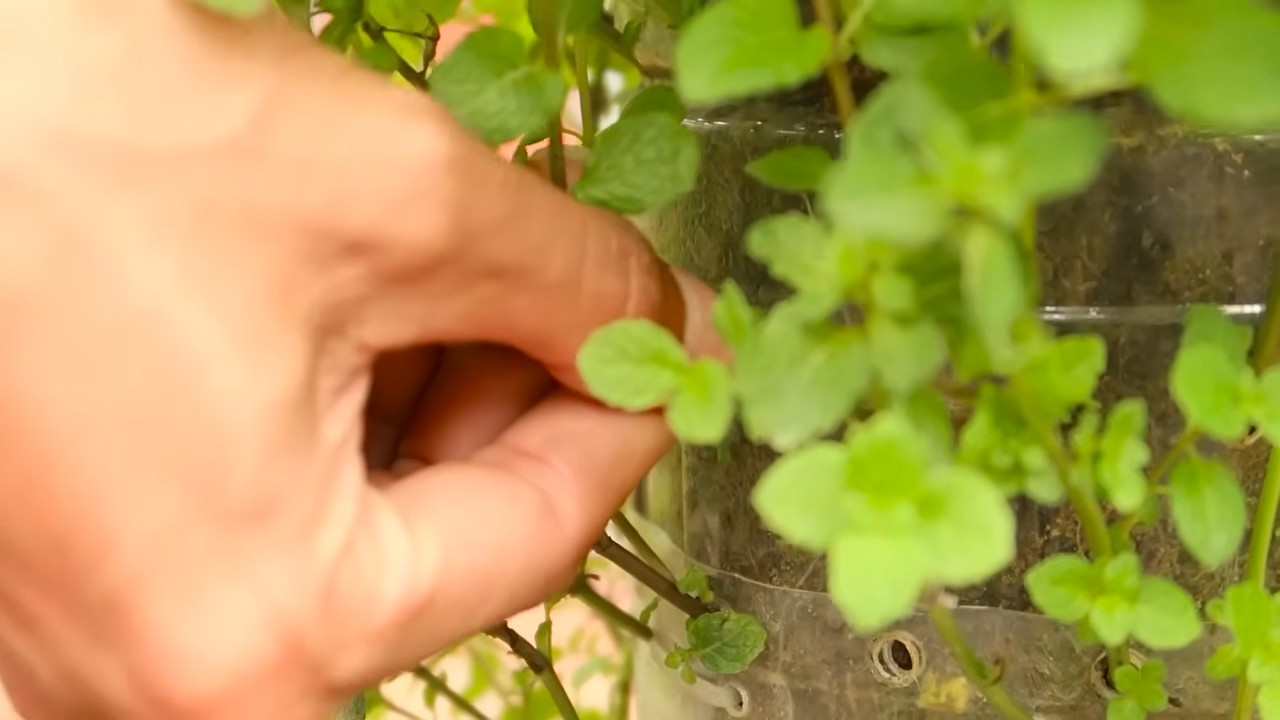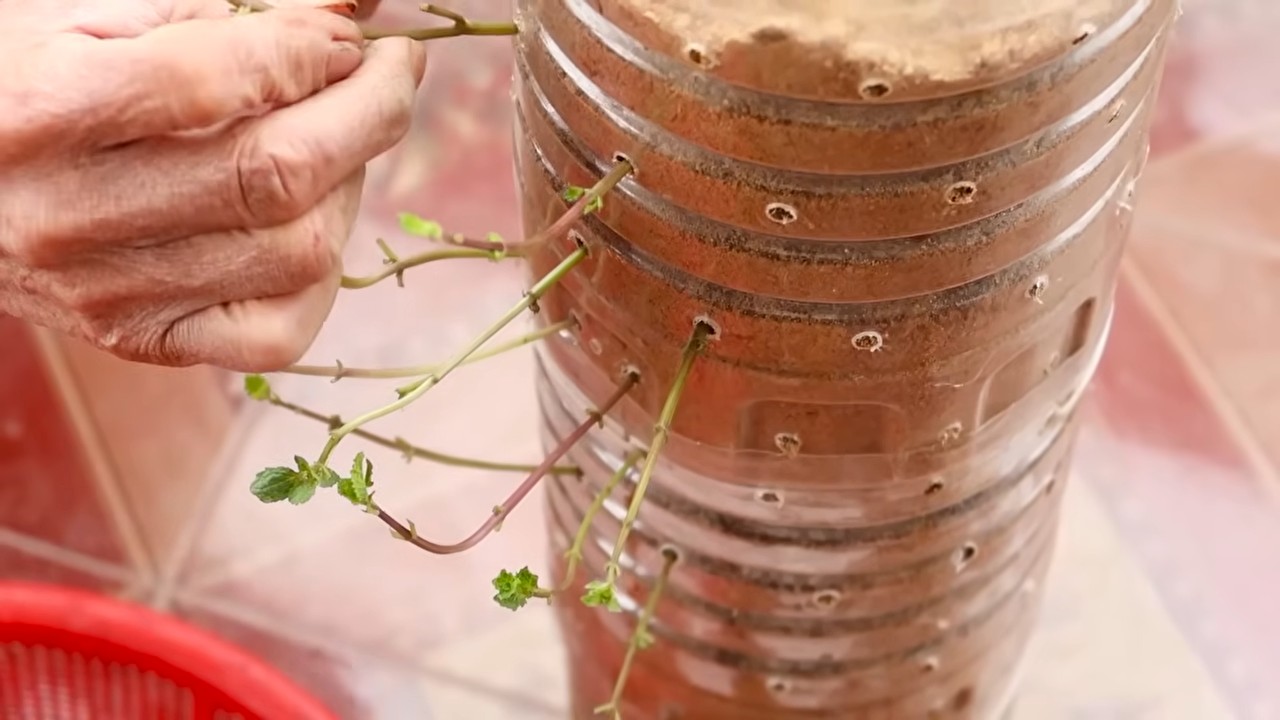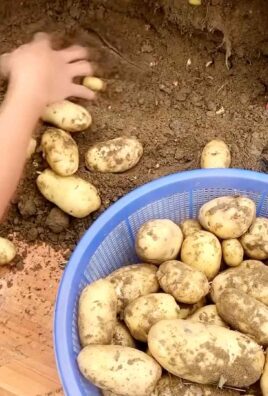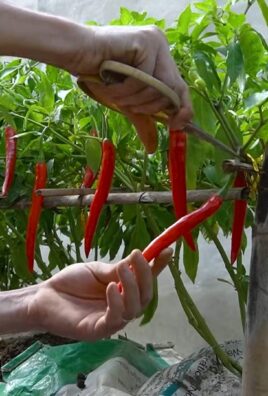Fresh Herbs Daily – imagine stepping outside your door and snipping fragrant basil for your pasta, or plucking vibrant mint for a refreshing summer drink. Sounds idyllic, right? Well, it’s more achievable than you think! For centuries, cultivating herbs has been a cornerstone of cultures worldwide, from ancient Egyptians using them for medicinal purposes to medieval monks tending herb gardens for culinary and healing needs. Today, the tradition continues, and I’m here to share some simple, yet effective, home gardening tricks and DIY hacks to help you grow your own thriving herb garden, even if you think you have a “brown thumb.”
Let’s face it, buying fresh herbs from the grocery store can be expensive and often, they wilt before you even get a chance to use them all. That’s where the magic of DIY comes in! This article is packed with practical tips and easy-to-follow instructions that will empower you to cultivate a flourishing supply of fresh herbs daily, right in your own backyard (or even on your windowsill!). We’ll cover everything from choosing the right herbs for your climate and space, to creating the perfect soil mix, and even some clever DIY projects to keep your herbs happy and healthy. So, ditch the wilted grocery store herbs and get ready to embark on a rewarding journey of growing your own delicious and aromatic herbs!

Fresh Herbs Daily: Your DIY Herb Garden for the Kitchen
Hey everyone, today I’m going to show you how to create a small but mighty herb garden right in your kitchen. This way, you’ll always have fresh herbs on hand to enhance your dishes. And the best part? It’s super easy and a lot of fun!
What you need: The Material List
Before we get started, here is a list of all the things you’ll need for your indoor herb garden:
- Containers: Pots, boxes, old cans – there are no limits to your creativity! Just make sure they have drainage holes so water can run off.
- Potting Soil: It’s best to use special herb soil, which is not too nutrient-rich and promotes the growth of herbs.
- Herb Seeds or Young Plants: Basil, parsley, chives, mint, rosemary, thyme – choose your favorite herbs! Young plants are easier, but seeds are cheaper and more fun.
- Gravel or Expanded Clay: For good drainage at the bottom of the pots.
- Watering Can or Spray Bottle: For watering the herbs.
- Trowel or Shovel: For repotting and planting.
- Labels and a Pen: So you know which herbs are growing where.
- Optional: A small pair of scissors or herb shears for harvesting.
- Optional: A bright spot by a window or a grow light.
Step-by-Step Guide: How to Create Your Herb Garden
Okay, now let’s get down to it! Follow these steps to create your own herb garden:
1. Preparation of the Containers
- Cleaning: Clean your containers thoroughly with water and possibly a little dish soap. This is important to remove any potential pathogens.
- Drainage: Fill a layer of gravel or expanded clay (approx. 2-3 cm / 1 inch) at the bottom of the pots. This ensures good drainage and prevents waterlogging, which could damage the herb roots.
- Filling with Soil: Fill the pots with herb soil up to about 2-3 cm (1 inch) below the rim. Lightly press the soil down.
2. Planting or Sowing Herbs
- Planting Young Plants: If you bought young plants, carefully remove them from their pots. Loosen the roots a bit before placing them in the prepared containers. Make sure the top of the root ball is level with the surface of the soil.
- Sowing Seeds: If you are using seeds, read the instructions on the seed packet. Usually, the seeds are sown in small indentations (approx. 0.5-1 cm / 0.2-0.4 inches deep) and lightly covered with soil.
- Mind the Spacing: Make sure the herbs have enough space to grow. Planting too densely can lead to diseases and poor growth.
3. Watering and Location
- Initial Watering: Water the herbs thoroughly after planting or sowing. The soil should be well-moistened, but not soaked.
- Choosing a Location: Place the pots in a bright spot by a window. A south-facing window is ideal, but east or west-facing windows are also suitable. If you don’t have a sufficiently bright location, you can use a grow light.
- Regular Watering: Water the herbs regularly, but not too much. The soil should always be slightly moist, but not wet. Avoid waterlogging. It’s best to test with your finger if the soil is dry before watering.
- Humidity: Some herbs, like basil, prefer higher humidity. You can increase humidity by regularly misting the herbs with water or placing a bowl of water nearby.
4. Care and Harvest
- Fertilizing: Herbs do not need much fertilizer. If you wish, you can fertilize them every few weeks with an organic herb fertilizer. Be sure to follow the dosage recommendations on the package.
- Pruning: Prune the herbs regularly to stimulate growth. Remove wilted leaves and flowers. This promotes the formation of new shoots and ensures the herbs become bushier.
- Harvesting: Harvest the herbs when they are large enough. Cut the stems with scissors or herb shears. It’s best to harvest herbs in the morning when they are most aromatic.
- Pests and Diseases: Watch out for pests and diseases. If you notice an infestation, treat the herbs with a biological pesticide.
Special Tips for Individual Herbs
Each herb has its own preferences. Here are a few special tips for some popular herbs:
- Basil: Needs a lot of sun and warmth. Water it regularly, but avoid waterlogging. Pinch off the flower buds so it doesn’t bloom and lose its aroma.
- Parsley: Prefers partial shade and moist conditions. There is flat-leaf and curly parsley. Flat-leaf parsley is more aromatic.
- Chives: Is very easy to care for and can also grow in partial shade. Cut it regularly so it doesn’t flower.
- Mint: Is very vigorous and can crowd out other herbs. It’s best to plant it in a separate pot. There are many different types of mint, such as peppermint, chocolate mint, or mojito mint.
- Rosemary: Needs a lot of sun and little water. It tolerates drought better than waterlogging.
- Thyme: Is also very easy to care for and needs little water. It likes it sunny and dry.
Avoiding Common Mistakes
Here are a few common mistakes you should avoid:
- Overwatering: Waterlogging is the most common reason for herbs dying. Make sure the soil can dry out well before you water again.
- Too little light: Herbs need a lot of light to grow. If they get too little light, they will become long and thin (leggy).
- Wrong soil: Use special herb soil that is not too rich in nutrients. Regular potting soil can contain too much fertilizer and harm the herbs.
- Not pruning: Prune the herbs regularly to stimulate growth. If you don’t prune them, they will quickly become old and lose their aroma.
- Ignoring pests: Watch out for pests and diseases. If you notice an infestation, treat the herbs as quickly as possible.
Where is the best place for my herbs?
The placement of your herb garden is crucial for its success. Here are some considerations:
Grow Light: If you don’t have a sufficiently bright location, you can use a grow light. There are special plant lamps that provide the right light spectrum for plant growth.
Windowsill: The classic choice! South-facing windows are ideal, but east or west-facing windows also work well. Make sure the herbs get enough light.
Kitchen: Convenient for using the herbs directly while cooking. However, make sure the location is bright enough.
Balcony or Terrace: If you have a balcony or terrace, you can also place the herbs there. But make sure they are protected from wind and rain.

Conclusion
So, there you have it! Transforming your kitchen into a fragrant haven with readily available, fresh herbs is not just a culinary dream, it’s an achievable reality. This simple DIY trick, focusing on maximizing the lifespan and flavor of your fresh herbs daily, is a game-changer for anyone who loves to cook. No more wilted, sad-looking herbs languishing in the crisper drawer. No more last-minute dashes to the grocery store for that essential sprig of rosemary. This method ensures you always have vibrant, flavorful herbs at your fingertips, ready to elevate your dishes from ordinary to extraordinary.
Why is this a must-try? Because it’s economical, reduces food waste, and most importantly, it enhances the taste of your food. Imagine the difference a handful of freshly chopped basil makes in your pasta sauce, or the aromatic burst of rosemary in your roasted chicken. These are the subtle nuances that elevate home cooking, and this DIY trick makes those experiences readily accessible.
But don’t stop there! This method is incredibly versatile. While we’ve focused on the basic principles, feel free to experiment with different storage containers. Some people prefer glass jars, while others swear by reusable silicone bags. The key is to ensure the herbs are properly hydrated and protected from excessive air exposure.
Consider these variations to tailor the method to your specific needs:
* Herb-Specific Adjustments: Delicate herbs like basil and cilantro benefit from a slightly looser wrapping to prevent bruising. Hardier herbs like rosemary and thyme can tolerate a tighter wrap.
* Freezing for Long-Term Storage: For herbs you won’t use within a week or two, consider freezing them. Chop the herbs, mix them with a little olive oil or water, and freeze them in ice cube trays. Once frozen, transfer the cubes to a freezer bag for easy access.
* Herb-Infused Oils and Vinegars: If you have an abundance of herbs, consider infusing them into oils or vinegars. This is a fantastic way to preserve their flavor and add a unique touch to your dressings and marinades.
* Growing Your Own: Take it a step further and start your own herb garden! Even a small windowsill garden can provide you with a constant supply of fresh herbs.
This DIY trick is more than just a storage method; it’s a gateway to a more flavorful and sustainable kitchen. It’s about appreciating the simple pleasures of cooking with fresh ingredients and minimizing waste.
We wholeheartedly encourage you to try this method and experience the difference for yourself. We are confident that you will be amazed at how much longer your herbs last and how much more flavorful your dishes become.
Don’t just take our word for it! Give it a try and share your experiences with us. We’d love to hear your tips, variations, and favorite ways to use your freshly preserved herbs. Share your photos and stories on social media using [Your Hashtag Here] and let’s inspire others to embrace the joy of cooking with fresh, vibrant herbs. Let’s all enjoy fresh herbs daily!
Frequently Asked Questions (FAQ)
How long will my herbs last using this method?
The lifespan of your herbs will vary depending on the type of herb and its initial freshness. However, using this DIY trick, you can typically expect your herbs to last for 1-3 weeks, significantly longer than if they were simply stored in the refrigerator without any special preparation. Delicate herbs like basil and cilantro may last closer to 1 week, while hardier herbs like rosemary and thyme can often last for 2-3 weeks or even longer. The key is to monitor your herbs regularly and discard any that show signs of spoilage.
What types of herbs work best with this method?
This method works well for a wide variety of herbs, including basil, cilantro, parsley, rosemary, thyme, oregano, mint, and chives. However, some herbs may require slight adjustments to the storage technique. For example, delicate herbs like basil and cilantro benefit from a looser wrapping to prevent bruising, while hardier herbs like rosemary and thyme can tolerate a tighter wrap.
What if my herbs start to wilt despite using this method?
If your herbs start to wilt, don’t despair! There are a few things you can try to revive them. First, check the moisture level of the paper towel. If it’s dry, re-dampen it. You can also try giving the herbs a quick soak in a bowl of ice water for 15-30 minutes. This can help to rehydrate them and restore their crispness. If the herbs are severely wilted, it may be best to discard them.
Can I use this method for pre-cut herbs from the grocery store?
Yes, this method works well for pre-cut herbs from the grocery store. In fact, it’s especially beneficial for these herbs, as they tend to dry out more quickly than freshly harvested herbs. Simply follow the same steps as outlined above, ensuring that the herbs are properly hydrated and protected from excessive air exposure.
Is it better to wash the herbs before or after storing them?
It’s generally best to wash the herbs before storing them, as this will help to remove any dirt or debris. However, it’s important to dry the herbs thoroughly before wrapping them in a paper towel, as excess moisture can promote spoilage. You can use a salad spinner or gently pat the herbs dry with a clean towel.
What kind of container is best for storing the wrapped herbs?
You can use a variety of containers to store the wrapped herbs, including plastic bags, reusable silicone bags, and glass jars. The key is to choose a container that is airtight and large enough to accommodate the herbs without crushing them. Some people prefer glass jars because they are reusable and easy to clean. Others prefer plastic bags because they are lightweight and flexible. Experiment with different containers to see what works best for you.
Can I freeze herbs using this method?
While this method is primarily designed for short-term storage, you can freeze herbs for longer-term preservation. However, it’s best to freeze the herbs separately from the paper towel. Chop the herbs, mix them with a little olive oil or water, and freeze them in ice cube trays. Once frozen, transfer the cubes to a freezer bag for easy access. This method helps to preserve the flavor and color of the herbs.
How do I know when my herbs have gone bad?
Signs that your herbs have gone bad include wilting, discoloration, a slimy texture, and an unpleasant odor. If you notice any of these signs, it’s best to discard the herbs. It’s also important to monitor your herbs regularly and remove any that show signs of spoilage to prevent them from affecting the other herbs in the container.
Can I use this method for other leafy greens, like lettuce or spinach?
While this method is primarily designed for herbs, it can also be used for other leafy greens, such as lettuce and spinach. However, you may need to adjust the storage technique slightly. For example, lettuce and spinach may benefit from a slightly looser wrapping to prevent bruising.
What are some creative ways to use my freshly preserved herbs?
The possibilities are endless! Use your freshly preserved herbs to add flavor to soups, stews, sauces, salads, marinades, and dressings. You can also use them to make herb-infused oils and vinegars, or to create flavorful herb butters. Get creative and experiment with different combinations of herbs to find your favorite flavor profiles. Remember, having fresh herbs daily is the key to unlocking a world of culinary possibilities!




Leave a Comment